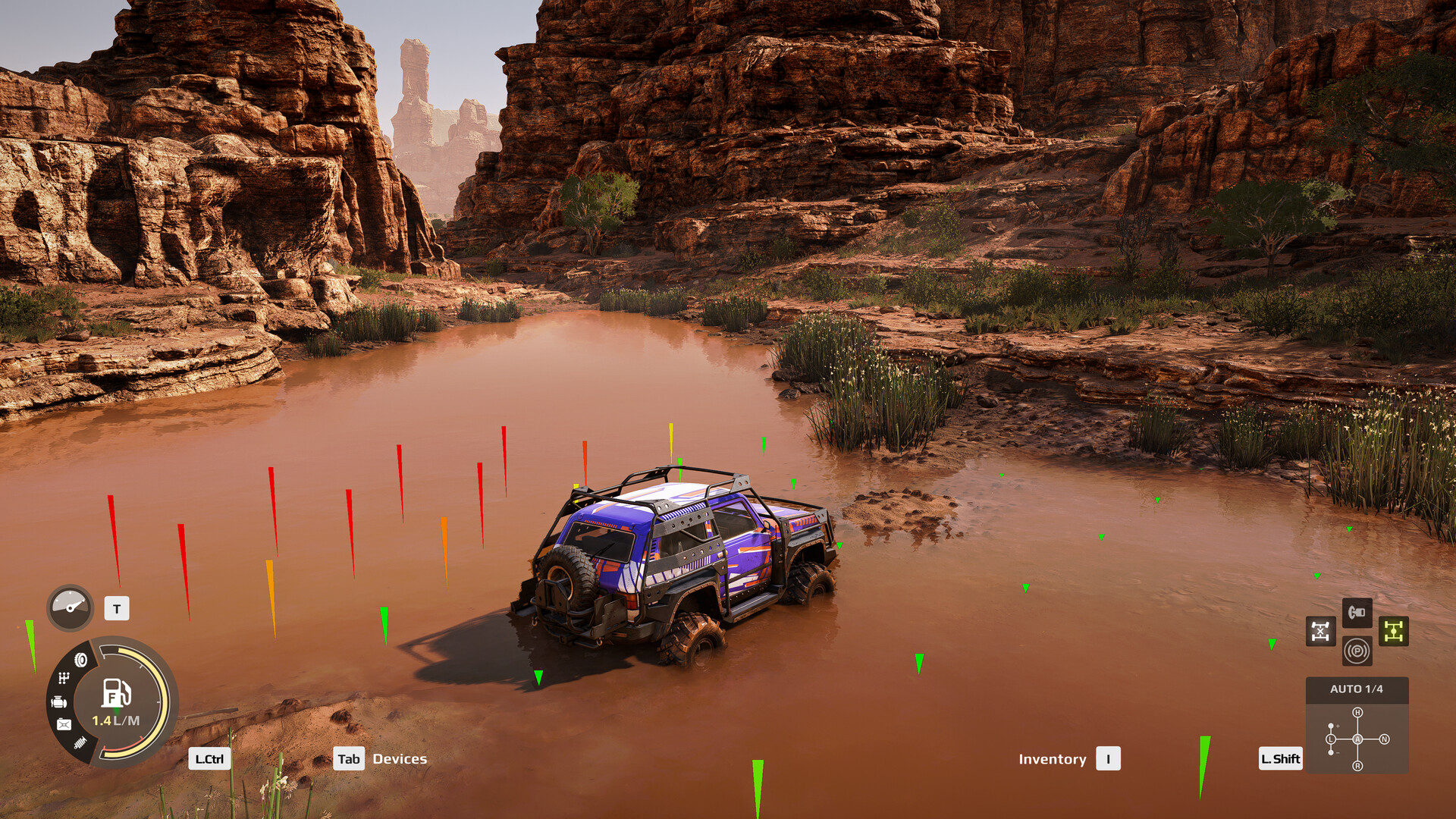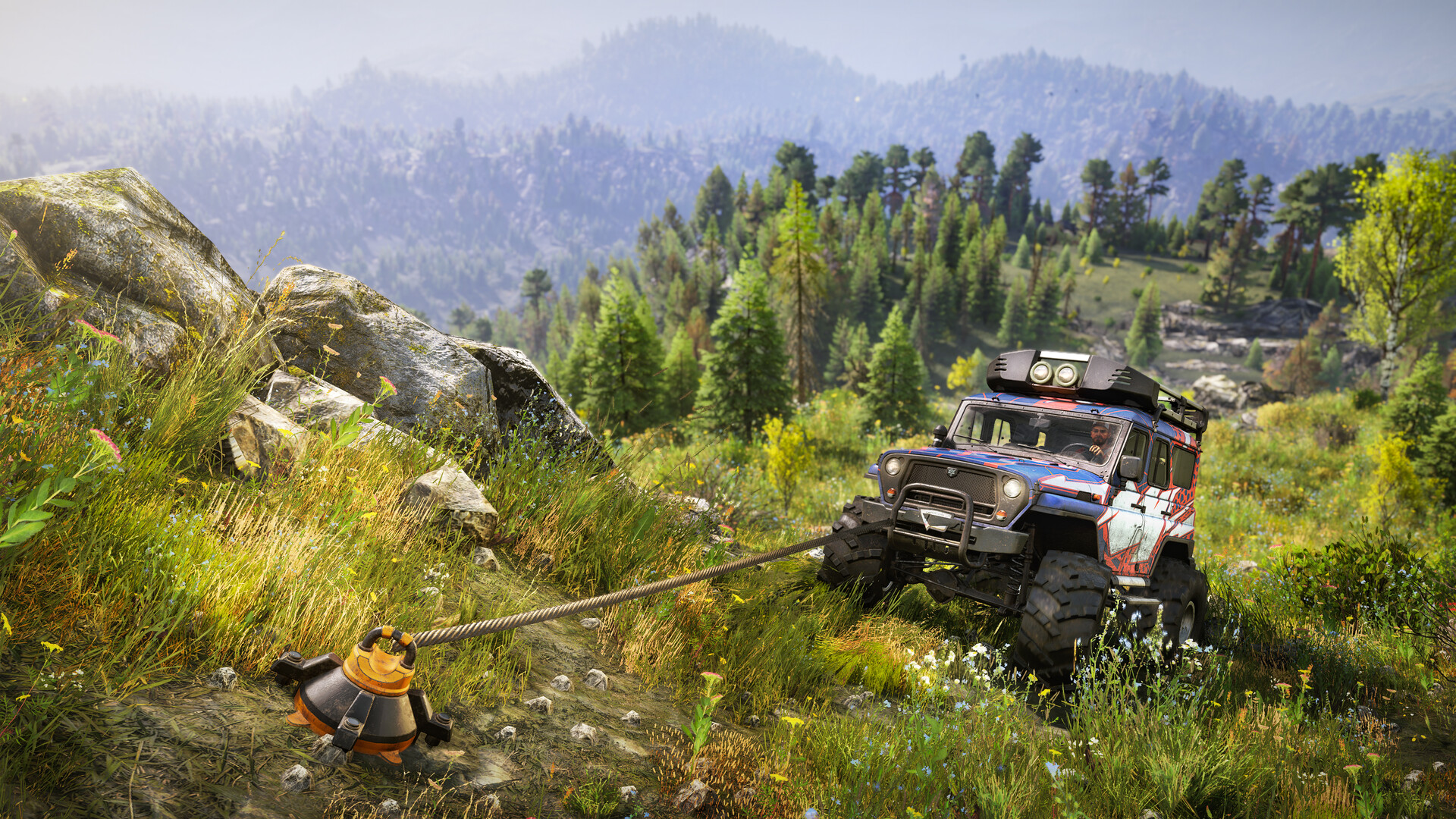Expedition Analysis: MudRunner Game

Expeditions: MudRunner game This is my new favorite hobby.
The sequel to SnowRunner, Expeditions takes a step aside to do the same thing, but in a slightly different way; if you’ve played SnowRunner or even the previous version of MudRunner (hence the subtitle, even though MudRunner is technically already spin off from another: Spintires, the best, like the most Soviet), you probably not only know what to expect from Expeditions, but also You want it’s what you’d expect, and that’s basically what Expeditions offers. If you don’t know what this is about, a couple of tidbits: in Expeditions you have a series of maps where you complete missions, the equivalent of a “main mission” in this type of simulator, which takes you through very difficult terrain in SUVs, vans and trucks different types, prepared for the type of extreme driving that the game focuses on.
To give the earliest example, a mission (actually one of the missions that could be considered a tutorial) might revolve around rescuing another vehicle stuck in a swamp. To achieve this, you need to choose a vehicle powerful enough to get someone else out of a bad situation; You will have to arm yourself in advance with resources (items, fuel, repair equipment) that may come in handy so that you do not end up in the same situation; You will have to traverse the appropriate part of the map, from the base where you are stationed to the swamp in question, carefully studying the map and establishing a navigation route that will allow you to arrive unharmed, without causing more damage than is strictly necessary. your car; You must drive to the place where you are needed, taking into account the unevenness of the terrain, the level of water when passing through it, points where trees can help you move by attaching a winch to them, gears, traction, tire pressure levels: everything that helps you move with great capabilities over terrain that has no shortage of rocks, boulders, gravel, mud, bogs, bogs, ponds, fords and all sorts of accidents. You have to get to the stuck car and extract it with the help of your trusty winch, which, like in SnowRunner, can become a partner in the game, and then manage to return, taking care not only of your integrity, but also the integrity of the other three-ton mass that you have hitched to her ass, looking for a way to get her to the collection point without toppling over, getting stuck, or falling off a cliff in an unfortunate manner due to any miscalculation, stupid or not.

So yes, good news: Expeditions, like SnowRunner, is that kind of game. Major expeditions become longer and can take as long as an hour as they become more difficult and demanding; They often require more planning than you might think at first glance, and much more adaptability than what the first missions imply, very easy and a bit simple (I mean, you can deploy up to four vehicles in one expedition for one expedition). reason: it is not wanton extravagance), and in many cases they involve moving relatively short distances at a speed that is more akin to standing still than moving. There are more light vehicles, but physics and maps interact closely, so it is not advisable to gain more speed than necessary. There are more tools (you can place winch attachment points where there aren’t naturally any, you can scan the environment for resources, you can take a drone to explore from the air and look for points of interest…) but none of them are particularly impressive : All of them are useful, all of them will save your life more than once, but none of them significantly changes the course of events. gameplay slow, methodical and hard game.
They really help give Expeditions an adventurous tone, as it’s now about finding the remains of crashed drones, checking the condition of dilapidated buildings, and salvaging abandoned treasure. These adventures (discovering the unknown, overcoming difficulties that seemed impossible, plunging into secluded corners that you know how to enter but do not know how to get out of) are richer, more varied, less lonely; In addition to the vehicle and equipment that you intend to transport in the loading area, you can hire the services of various specialists who will provide you with assistance and support along the route, which for practical purposes involves applying improvements in efficiency or performance this or that. If you hire cameraman Akane Ishida, famous in the “Japanese vlogging scene”, your drone’s range and mobility will increase; hydrologist Bruce Brown, “head of the environmental monitoring group Justice for Eden, which aims to go after the biggest critics of public health and environmental protection,” makes the sonar effect permanent, allowing you to more accurately determine the water levels around you. , in addition to allowing the installation of winch anchors in underwater areas; Manager David Simmons (“He hates surprises and unexpected situations”), a no-nonsense guy, negotiates the prices of your finds so that you earn 50% more when you sell them. An interesting system is the hired specialist system: they are useful in any expedition, but also help to establish the reason for free trips a little more when you go out exploring without a specific goal, just looking for treasure. or secondary contracts, or smaller deliveries that fill out the cards and which you can make whenever you want, in the order you want, and in the way you like best. You may be interested in having a manager if you intend to focus on selling treasures; You may prefer an operator if you want to search for new points of interest using a drone; Or maybe it’s just the areas you have left to comb that need a little extra help with the ponds, or you need a cable that detects depending on the terrain.
This is a game created based on small details, such as descriptions of specialists, or texts accompanying the orders you receive. Strictly speaking, it’s not a fun game, even when it actively tries to be (one mission, called “Breaking Brad,” is about a scientist named Brad who gets lost in the Grand Canyon; they suspect, they tell you, that he took a mobile laboratory and was so high that he doesn’t know where he is or how to get back), but he, of course, has a very developed sense of humor, present in every pore, in every crevice: it’s dry, sharp humor, as icy as the speed with which the cars you are driving are moving. The fantasy that video games usually facilitate when it comes to getting behind the wheel involves running repeatedly, driving very fast, breaking the rules that in our daily lives we strictly observe out of prudence or fear; “Expeditions” asks with Borgesian humor what would happen if we walked very slowly, or through mud, or stepped on rocks, or vertically.

This game also has a beginning and an end, although I haven’t reached that end yet and don’t plan on doing so anytime soon. At the beginning I said that this was my new favorite hobby. Like SnowRunner, Expeditions is long; is Very for a long time, in fact, despite the fact that the “content”, in the saddest and most ordinary sense that can be found in this word, is relatively limited: nine maps, divided into two types of locations (Arizona and the Carpathians; endless red) . mountains in one case, endless green forests in another), which adds up to several hundred tasks that need to be completed between the main expeditions and everything else, which is not so little. I would dare to say that to do everything you need to dedicate time closer to two hundred than one hundred hours. I have no intention of doing all this. NowI’m in a hurry, as fast as I can; I’ve put over thirty hours into it over the past week or so, but I know that, as I did with SnowRunner, I’ll continue to play Expedition for a long time to come: God willing, I’ll be coming back to it all year, and next year , and if the season is not bad, then the next one too. Following on from its successful (probably surprising) predecessor, Expeditions offers a well-integrated idea of seasons and content passes, and there’s already a Year 1 Pass that gives you access to the first four seasons. In this sense, it is an experience not unlike that of Picross, to take the most bizarre and extreme example I can think of: another addictive pastime that those of us who enjoy its pleasures return to religiously year after year. no fuss, no questions asked, and it’s perfect for playing little by little, without big goals, with full attention or in the background, depending on the situation or your head.
In addition to specific news, additions or changes that may occur regarding SnowRunner, this nature Expeditions: MudRunner game (a hobby, a game that you always want to have on hand no matter what, an enjoyable activity that is both stimulating and relaxing that you know you want to do for weeks, months, years) seems to me to be one of the keys as for those who don’t knows the previous parts, and, above all, for those who know what it means to dedicate hundreds of hours to cultivating the most powerful, fun, incredible and anecdotal memories possible. . Based on very smart use of physics, perfect calculation of weights in the systems that drive their simulation, and restrained but very effective mechanics, these Saber games have found a happy medium that makes them extremely exciting and immersive, and expeditions less surprising. , Maybe; less explosive, with clearer technical limitations, perhaps something cooler, more calculated, no matter what – another very good example.
(8)
